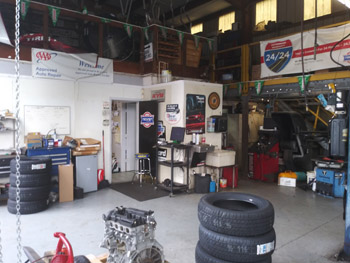All Categories
Featured

2 crucial solutions that are typically forgotten yet have a significant effect on tire longevity and efficiency are tire turning and placement. Allow's dive right into what tire rotation and positioning are and why they're important for your cars and truck.
What Is Tire Turning? Tire rotation is the procedure of moving your tires from one setting to an additional to guarantee they put on uniformly. Since your vehicle's tires function at different prices depending on their setting (front tires versus back tires), revolving them on a regular basis helps to distribute the wear equally, causing a longer lifespan for your tires.
Tires on the front axle have a tendency to put on a lot more promptly than those on the back axle, specifically in front-wheel-drive cars, where the front tires deal with both steering and power. On the other hand, rear tires could put on unevenly depending on the automobile's weight distribution and driving problems. By revolving your tires every 6,000 to 8,000 miles (or as advised by the maker), you'll make sure an extra well balanced wear pattern.
What Is Tire Alignment? Tire alignment, also referred to as wheel placement, describes changing the angles of your auto's wheels to the producer's specs. Appropriate positioning makes certain that your tires are aiming in the best instructions, and it assists take full advantage of tire life and boost lorry handling. There are three major aspects of positioning: camber, wheel, and toe.
Camber refers to the tilt of the tires from the front of the automobile. If your tires are tilted too much internal or outward, it can cause uneven wear. Caster describes the angle of the guiding axis when seen from the side of the auto. This affects the security of the steering, especially when driving straight. Toe refers to the angle at which the tires point inward or exterior when viewed from above. This affects just how your automobile tracks when traveling. A correct positioning makes certain that all four tires are aiming right in advance and are angled properly. Imbalance can result from hitting pockets, visuals, or just from the wear of suspension elements gradually.
Why Tire Turning and Positioning Matter. Extended Tire Life. Both tire rotation and placement help avoid unequal tire wear. When your tires put on equally, they last much longer, which can conserve you cash over time by reducing the need for premature replacements.
Improved Safety. Proper tire turning and placement enhance vehicle stability and handling. Misaligned tires or unevenly used tires can negatively impact your capability to guide and quit your lorry, specifically in emergency situations. Routine upkeep ensures your tires execute efficiently, offering a safer driving experience.
Better Gas Effectiveness. If your tires are not aligned correctly, they might drag against the roadway surface area, triggering resistance. This extra rubbing can reduce gas efficiency, creating your vehicle to take in even more gas. Regular tire positioning makes certain that your car relocates effectively, improving gas mileage.
Improved Convenience. Imbalance or erratically worn tires can lead to a rougher experience, as your car may pull to one side or create resonances. By maintaining your tires turned and aligned, you'll take pleasure in a smoother and much more comfortable driving experience.
Signs That Your Tires Required Turning or Alignment. It's vital to stay alert for any kind of indicators that your tires require turning or positioning. Keep an eye out for these usual indicators:
Uneven Tire Use: If you discover that a person tire is considerably a lot more used than the others, it may be time for a rotation or alignment. Guiding Pull: If your automobile pulls away while driving directly, this can indicate misalignment. Vibrations: If you feel vibrations in the steering wheel or the car itself, maybe a sign of imbalance or uneven tire wear. Screeching Tires: Uncommon tire sound can additionally suggest inappropriate alignment or the requirement for a tire turning. Exactly how Commonly Should You Rotate and Straighten Your Tires? Tire rotation must typically be done every 6,000 to 8,000 miles or as specified in your lorry's proprietor's handbook. It's an excellent idea to rotate your tires during every oil change, as this will certainly assist you remain on top of normal upkeep.
As for alignment, it doesn't require as constant service. Commonly, positioning should be examined a minimum of annually or whenever you discover concerns like pulling to one side or vibration. You might likewise need placement if you've hit a big gap or aesthetic, which can toss your wheels out of positioning.
Final Thought: Maintain Your Tires in Top Shape. Tire rotation and placement are crucial solutions that maintain your automobile running smoothly, safely, and successfully. By taking the time to have your tires rotated and aligned on a regular basis, you're spending in your auto's efficiency and longevity, while additionally improving your safety and security when driving. Stay proactive with tire maintenance, and your auto will thanks with better gas economy, boosted handling, and extended tire life.
Latest Posts
Advanced Eye Center South - Trusted Eye Care Experts Nearby: Thorough Eye Checkups & Advanced Treatments.
Car Repair Experts Now! at MO
Radiator Repair and Service Today! at MO
